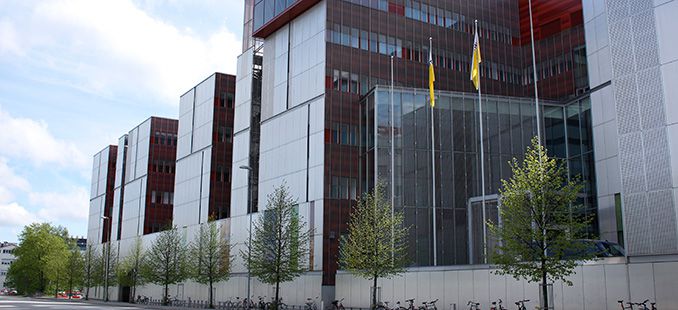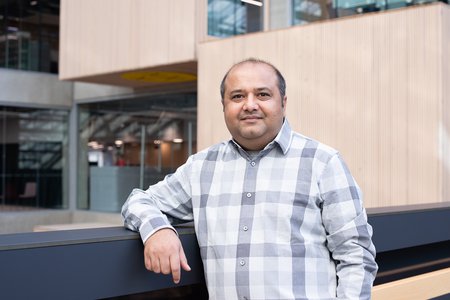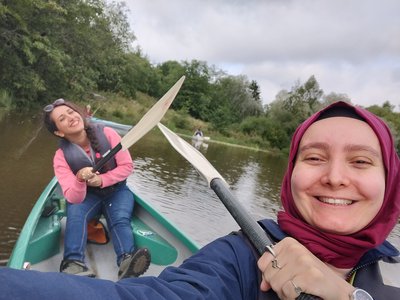
At work: More expertise in mathematical modelling for Turku University of Applied Science
Turku University of Applied Sciences has significantly increased its research staff's expertise in mathematical modelling through new personnel recruitment. Ashvin Chaudhari, Rabia Altunay, and Fatemeh Ardaneh have begun their work as researchers in the Computational Engineering and Analysis research group in early this autumn.
Text and photos: Martti Komulainen
The Computational Engineering and Analysis (COMEA) research group focuses on solving various interdisciplinary problems requiring technical expertise, using mathematical modelling and computational CAE methods. The group aims to act as a bridge between theory and practice, producing both new research data and functional solutions to practical problems.
Two examples of targets in which the mathematical modelling and simulation of the research group are utilised:
In order to navigate safely, autonomous vessels need versatile sensor information, route information, and weather information. Dr Ashvin Chaudhari studies wind conditions in the Turku Archipelago using mathematical atmospheric flow models as part of the Applied Research Platform for Autonomous Systems (ARPA) project. Together with companies in the field, the ARPA project will establish a new experimental environment for autonomous vehicles in Turku.
Stormwater (rainwater, melting water, and drainage water from building foundations) is a growing problem, for example due to climate change. Ashvin Chaudhari is also a mathematician and modeler in the Intelligent and Sustainable Stormwater Management (ISMO) project, which develops modelling and simulation tools for stormwater management in varying conditions.
–The more optimally we are able to use the equipment the greener and more ecological it is, explains Mika Lohtander, Head of Education and Research, the reasons why TUAS has invested in modelling expertise.

An understanding of flow dynamics is needed everywhere
Dr Ashvin Chaudhari specialises in flow dynamics, research focusing on fluid and gas movement. Ashvin Chaudhari has transferred in the summer from Lappeenranta University of Technology, where he did his doctorate in 2014.
– Turku is a beautiful and conveniently sized city. Turku University of Applied Sciences' COMEA research group has good conditions for conducting research, Ashvin Chaudhari describes the factors that attracted him to Turku.
His family includes a wife and two children.
Opportunities to apply information attract interest
Iran-born Fatemeh Ardaneh is interested in the possibilities of applying information in the world of universities of applied sciences, and she would like to work in industry later. She and Rabia Altunay, who started at the same time in the summer, work half of the time in Turku as project engineers and half as researchers at Lappeenranta University of Technology. She is finishing her doctorate studies in the near future.

Fatemeh Ardaneh also specialises in flow dynamics, somewhat different from Ashvin Chaudhari. She has focused on, among other things, optimising print nozzles for 3D printing of medicines.
Rabia Altunay from Turkey is a full-blooded mathematician who participates in materials engineering projects at Turku University of Applied Sciences. She studies the optimisation of the placement of fibre reinforcements in, for example, 3D printed bite rails using structural mechanics models.
Both praise the beautiful nature in Finland and the handsome EduCity campus building.
– My seven-person research group is truly international. At the moment, I am its only native Finnish leader. Internationality is not in itself a value in this work, but we have succeeded in finding tremendous technical expertise abroad. In our projects, we are able to offer these researchers practical and business challenges that they solve in their research work. Researchers often have their own dissertation projects, which we have encouraged and also built functional, flexible cooperation patterns with the University of Turku and LUT University of Lappeenranta, Principal Lecturer Eero Immonen, Adjunct Professor and head of the COMEA research group, sums up the backgrounds of the new recruits.